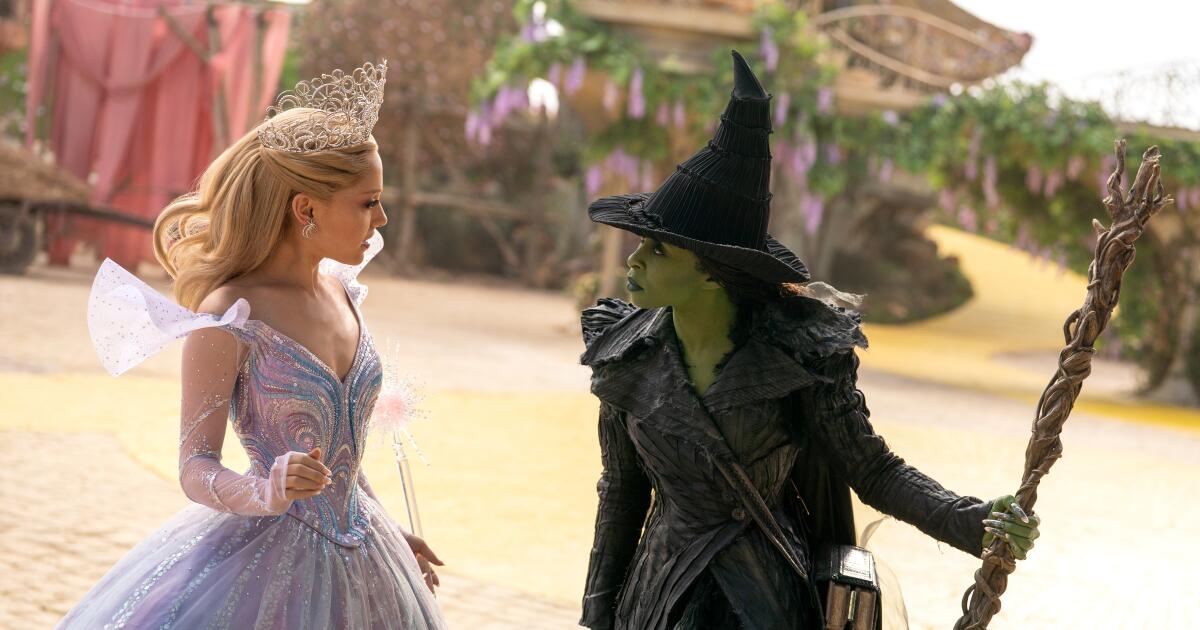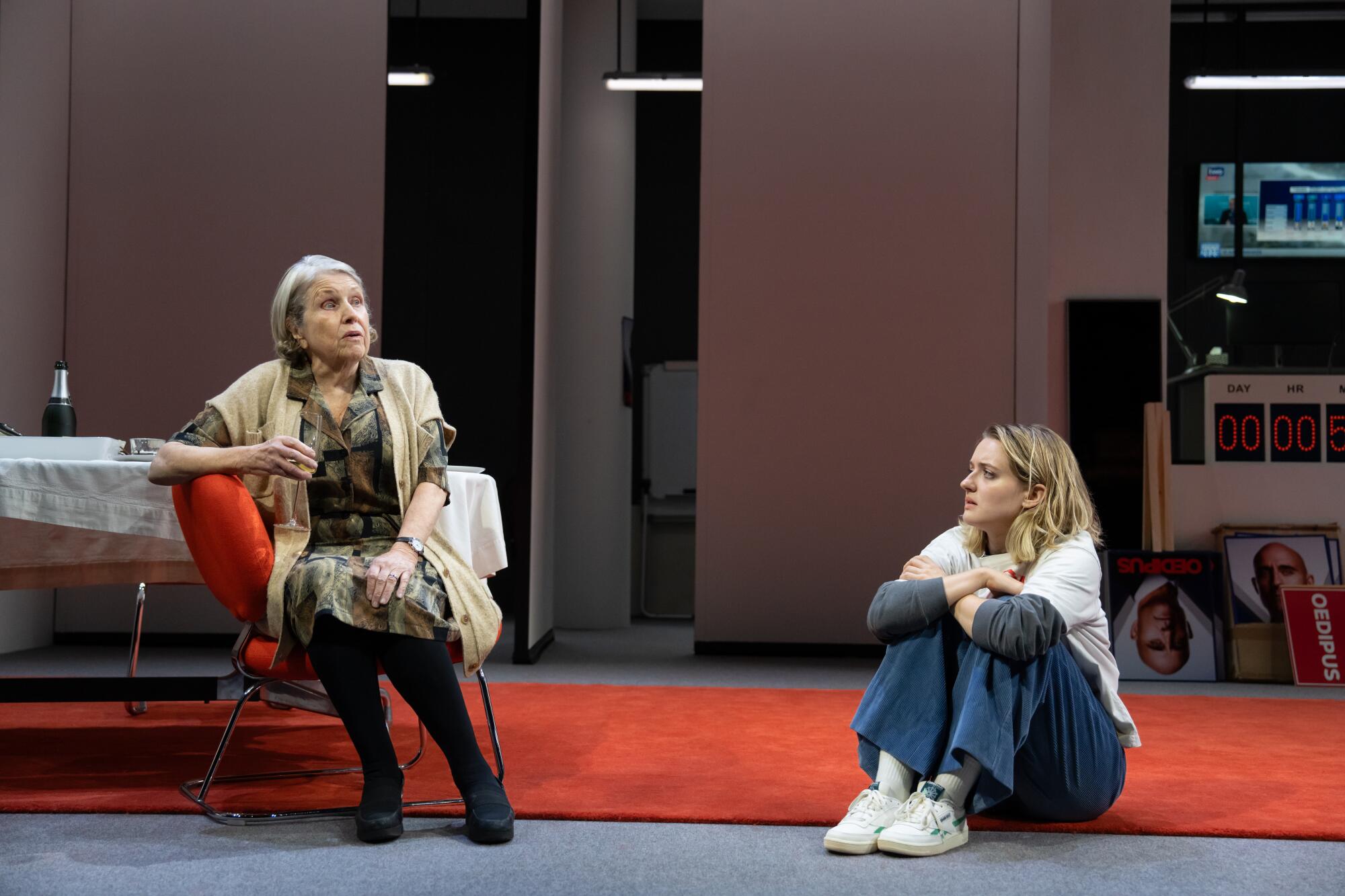From Broadway to blockbuster: How Universal built a multimillion-dollar ‘Wicked’ empire
Back in 2024, Universal conjured a pink and green tornado that swept pop culture.
From themed drinks at Starbucks and dolls of Elphaba and Glinda, to joint appearances by stars Cynthia Erivo and Ariana Grande at the Olympics and throughout a heavily-publicized press tour, “Wicked” was everywhere.
As the conclusion of the two-part film franchise heads to theaters at the end of the week, the marketing for “Wicked: For Good” has accelerated.
There are still themed Legos, but now also Gain laundry scent boosters, Swiffers and Pottery Barn bedding. There was a “Wicked” night on rival network ABC’s “Dancing With the Stars” and a “Wicked: One Wonderful Night” musical event broadcast on NBC.
The complete takeover of culture was all part of Universal’s plan to build one of its biggest and most important franchises, which has already brought in nearly $759 million in worldwide box office revenue for the first film, not to mention the haul from merchandise sales, theme park tie-ins and other categories.
Beyond the immediate revenue, “Wicked” also gives Universal a rare, female-focused franchise, an underserved audience, particularly as so many recent films have been geared toward men.
The success of the Broadway play, which has run for more than two decades, gave Universal the confidence in its potential for the big screen, said David O’Connor, president of franchise management and brand strategy at Universal Pictures. He’s also been a fan of the stage production almost from the beginning — he watched a table reading on the Universal lot, saw the musical additions to the script and finally, its run in San Francisco.
“For us, you had this potential to really take the fanship and really make ‘Wicked’ into a cultural imperative,” he said in a call from New York ahead of the film’s premiere. “When you think about the characters, the two leads, the themes of friendship, identity and empowerment, and how that resonates universally, and then, of course, the fantastical worlds of Oz and Shiz and Munchkinland, it just seemed like such a great opportunity for us.”
“Wicked” has proved to be a key boost to Universal’s lineup of blockbuster franchises.
Though the studio boasts series like “Jurassic Park,” “Despicable Me” and “Fast & Furious,” it has lacked the deep roster of intellectual property that rivals like Walt Disney Co. and Warner Bros. have, said Brandon Katz, director of insights and content strategy at data firm Greenlight Analytics.
The series “has really emerged as a much-needed, fresh tentpole for Universal,” he said. “There’s such a waterfall of value that this two-part franchise creates that Universal will be banking out on this for years to come.”
The two films were shot back-to-back, with a combined production budget of $300 million, reportedly split evenly between the two.
So far, interest for the second film is high — as of Thursday, “Wicked: For Good” was the highest ticket pre-seller of the year, according to Fandango. It is also the highest PG-rated ticket pre-seller ever on the Fandango platform, passing 2017’s live-action “Beauty and the Beast,” 2019’s animated hit “Frozen 2” and the first “Wicked.”
The film is tracking to haul in $150 million to $160 million in its opening weekend, according to estimates from industry analysts.
And the film’s appeal to women is crucial, particularly in a year when there were few films geared toward female viewers. Despite the persistent debates about the dearth of female-focused films, there have been few big, recent hits, other than 2023’s “Barbie” and last year’s “Wicked.”
“Every three or four years, female audiences are rediscovered with some hit,” said Alisa Perren, professor in the department of radio-television-film at the University of Texas at Austin’s college of communication. “It’s kind of striking how little mainstream female [films] have been released.”
To court all audiences, including those who were familiar with the play as well as those new to the story, Universal leaned into its so-called Symphony program to leverage all arms of the company to promote a film.
The program has been used previously for films like “Despicable Me” and has become a critical part of the marketing campaign, O’Connor said.
One new strategy the company used for supporting this franchise was building a “Wicked” fair, which was held on set in 2023 in London and allowed more than 200 partners to get a feel for the story, see the filmmakers and actors and meet heads of departments, like costumes and props. The studio has done set visits in the past, but nothing like this.
That open house was pivotal in driving partnership agreements and started to fuel the franchise’s success, O’Connor said. One of those was Lego, which signed on with “Wicked” after the fair and has been a partner on both films with product lines and an episode of “Lego Masters.”
Because not all geographic markets had the same built-in awareness of the Broadway play, getting corporate brands on-board was key to increasing knowledge of “Wicked” around the globe, he said.
Though “Wicked: For Good” marks the conclusion to the two-film series, O’Connor was coy about what’s next for the franchise.
“Our focus remains on building experiences that will deepen that connection to ‘Wicked,’” he said. “And all I can say is, we are very committed to ‘Wicked,’ but it’s probably too early to share much more than that.”









